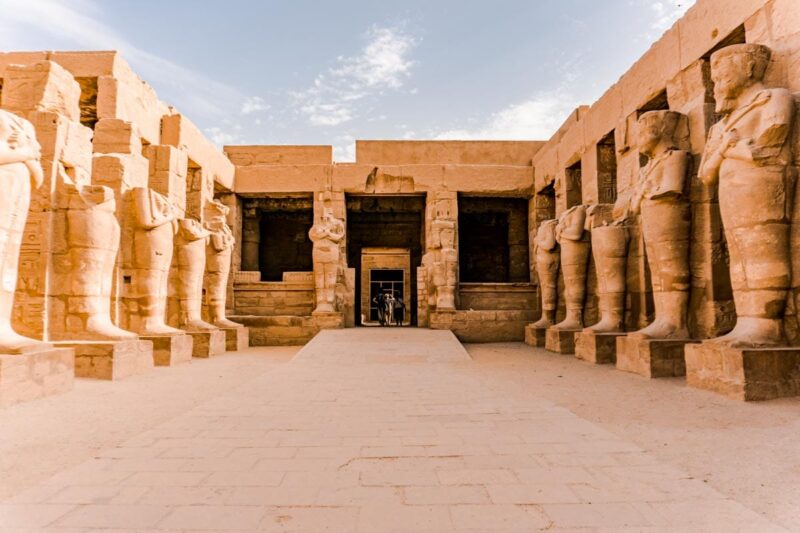Egypt is an African country bordered by the Mediterranean Sea from the north and the Red Sea from the east. Also, the long Nile River penetrates its lands from the south to the north where it flows to the Mediterranean.
In addition to its prominent location, Egypt has a great and long history starting thousands of years ago.
Therefore, modern Egypt is an attractive destination for tourists from all over the world who come to see its ancient huge monuments and enjoy its natural beauty.
If you are excited to visit Egypt, hence let’s explore the must-see monuments there.
Giza Pyramids
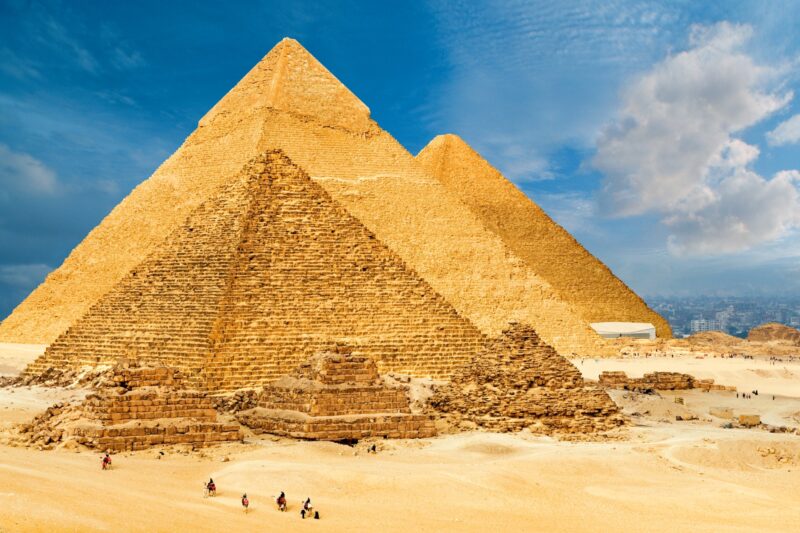
The city of Giza is located in lower Egypt south of Cairo, on the west bank of the Nile. Giza embraces one of the greatest historical sites in the whole world, it is the Giza plateau. It comprises the large Giza pyramids, the great sphinx, and the museum of Khufu’s boat.
The Great Giza Pyramid is the only surviving monument of the seven old wonders of the world. Once you arrive at the Giza plateau, you can easily recognize the three outstanding pyramids.
These large pyramids were built as royal tombs for three kings of the old kingdom. The largest one belongs to the king “Khufu”, the son of King “Snefru” and the second ruler of the 4th dynasty in the old kingdom era.
The second one is for King “Khafra” the son of Khufu, while the smallest one belongs to “Menkaura”, the son of Khafra.
Karnak Temple
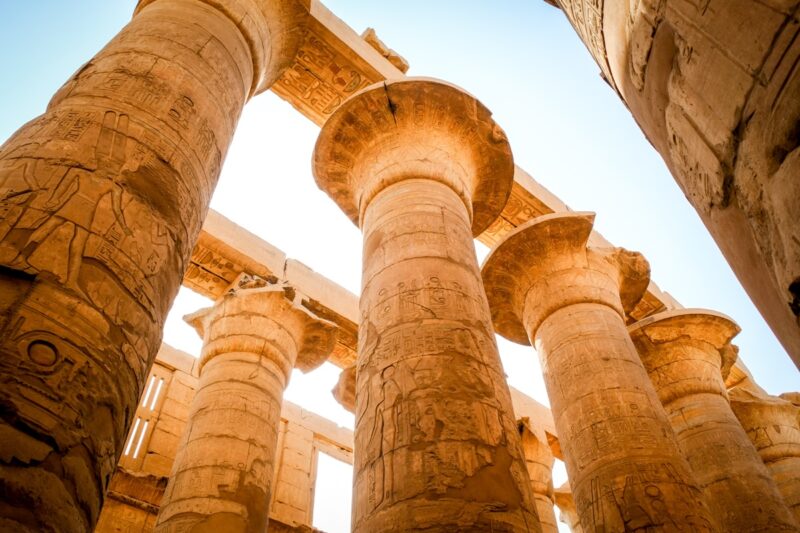
The Karnak temple is the largest and greatest remaining temple in Egypt. It comprises many temples and chapels but the largest one is the temple of Amun-Ra. Many rulers of the new kingdom contributed to the construction of this temple, and each of them sought to make his mark on this sacred spot.
The temple has 10 pylons, and many pillared halls and chapels. The most important one is the great hypostyle hall which is considered the largest one in Egypt.
The Temple of Luxor
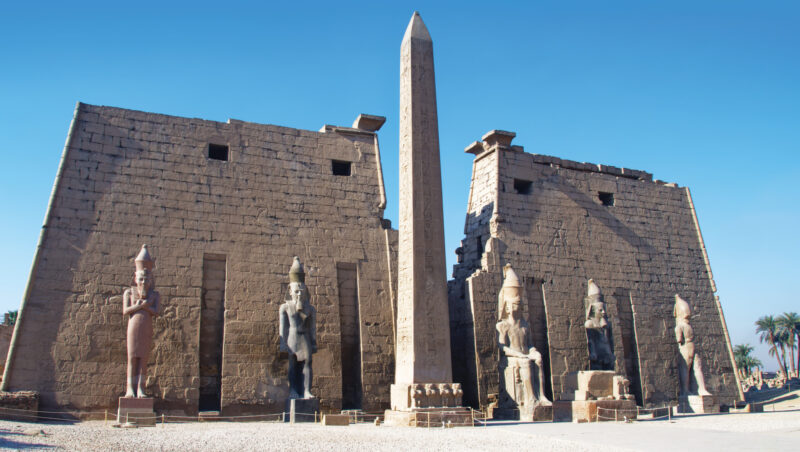
To the south of the Karnak temple in Luxor, you can see another great temple for the god Amun-Ra, it is the Luxor temple. It was built by King Amenhotep III in the new kingdom on the site of older middle kingdom construction.
Like the temple of Karnak, many Kings contributed to its building, among them Hatshepsut, Tutankhamun, and Horemheb. The facade of the temple consists of a pylon, preceded by colossal statues of King Ramses II and a huge obelisk.
The Valley of The Kings
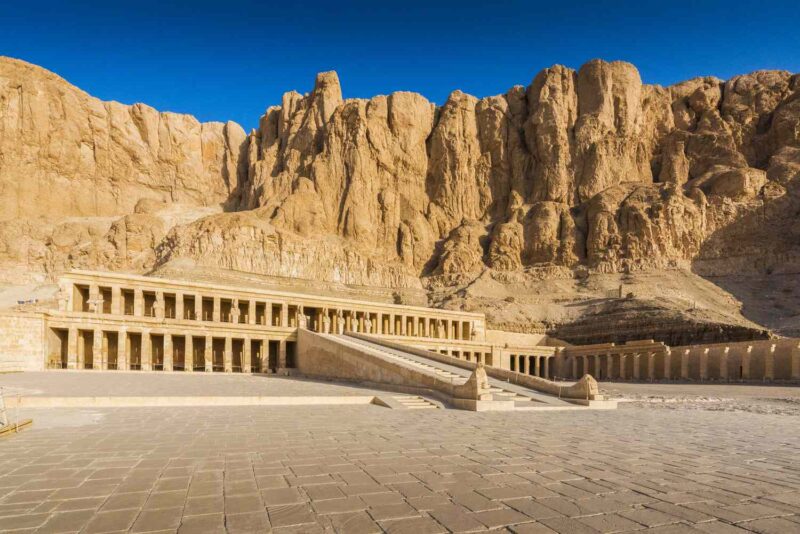
The Valley of the Kings is a rock valley in Luxor, on the west bank of the Nile. Its name refers to the ancient royal tombs cut through it; more than 60 Egyptian pharaohs were built there. Those tombs date back to the new kingdom when the monarchs decided to hide their burials to avoid robbery.
Some of these tombs were built on a straight axis, while others are on a bent axis. The plan of tombs in the Valley of the Kings typically consists of an entrance leading to a long passage, then the well shaft, a pillared room, and the burial chamber.
The most elaborate tomb in the King’s valley is the tomb of Tutankhamun, where his great treasures and gold masks were found.
Temples of Abu Simbel
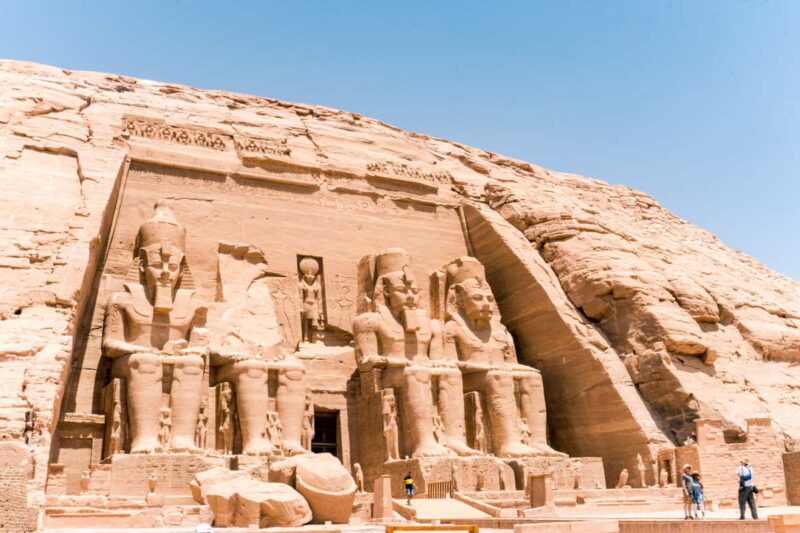
The temple of Abu Simbel is located south of Aswan behind the high dam. It is the largest Egyptian rock-cut temple that was built by Ramses II. Also, there is another smaller temple in Abu Simbel built by Ramses II for his beloved wife “Nefertari”.
The facade of the large temple is unique for being preceded by 4 colossal statues of Ramses II. It is to be mentioned that this temple was entirely relocated after the construction of the high dam since it was threatened by the water of the flood.
Al-Muizz Street in Cairo
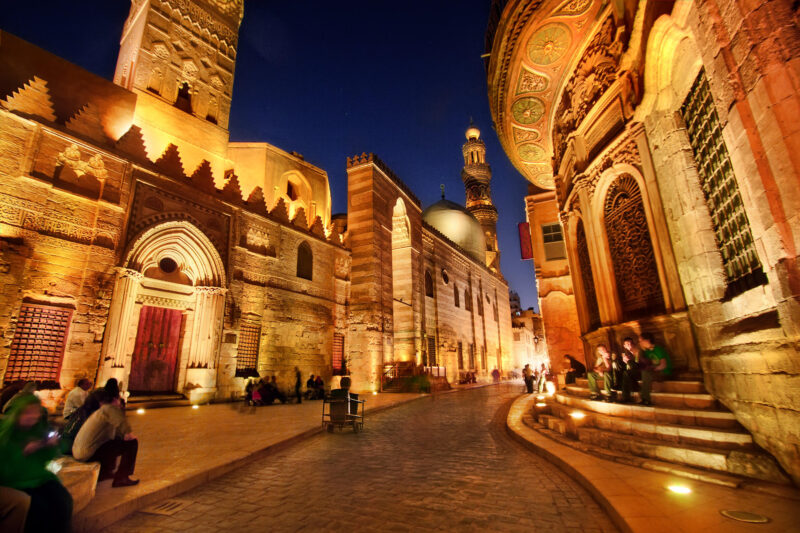
Al-Muizz Street was the heart of Islamic Cairo, it was named after the Fatimid sultan “Al-Muizz li-Din Allah al-Fatimi”. The street is considered a wide open-air museum of Islamic monuments that date back to the period from the Fatimid era until modern times.
You can recognize different types of Islamic architecture during your tour of A-Muizz Street. Undoubtedly, mosques were the main structures in Islamic architecture. Many mosques are still well preserved, revealing the art characteristics of each period in Islamic history.
Also, “Madrasas” were important educational buildings, the word Madrasa is the Arabic word for school, and it is where students were learning from their mentors. Besides, you can see old houses like “Beit El-Seheimy”, which is an amazing house dating back to medieval times.
The “Sabil” is another significant type of building you can find there, it was a charity building for providing people with clean drinking water for free.
The Egyptian Museum
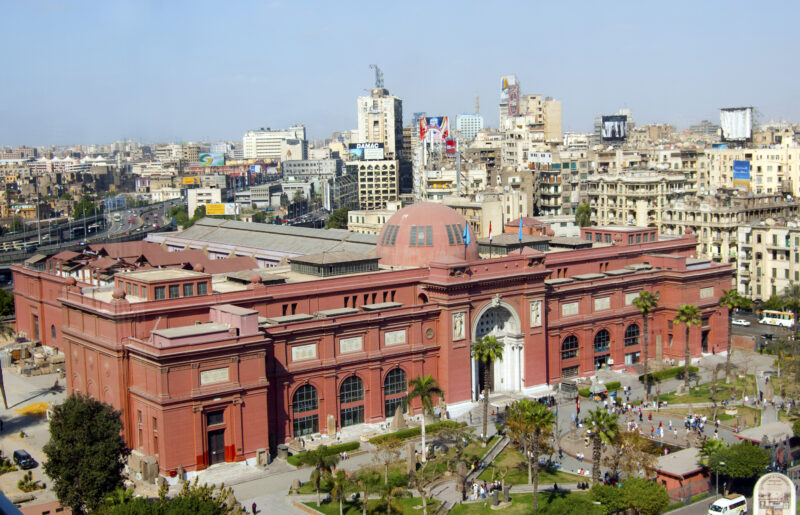
The Egyptian Museum is located in Tahrir Square in Cairo, it is the oldest museum in Egypt. The museum was built in 1902 to preserve ancient Egyptian antiquities and protect them from being destroyed or stolen.
It consists of two levels that accommodate more than 160 thousand artifacts. These artifacts are displayed inside the museum according to their chronological order. It accommodates masterpieces of ancient Egyptian art from the Neolithic Period until the Islamic period.
The Step Pyramid of Djoser
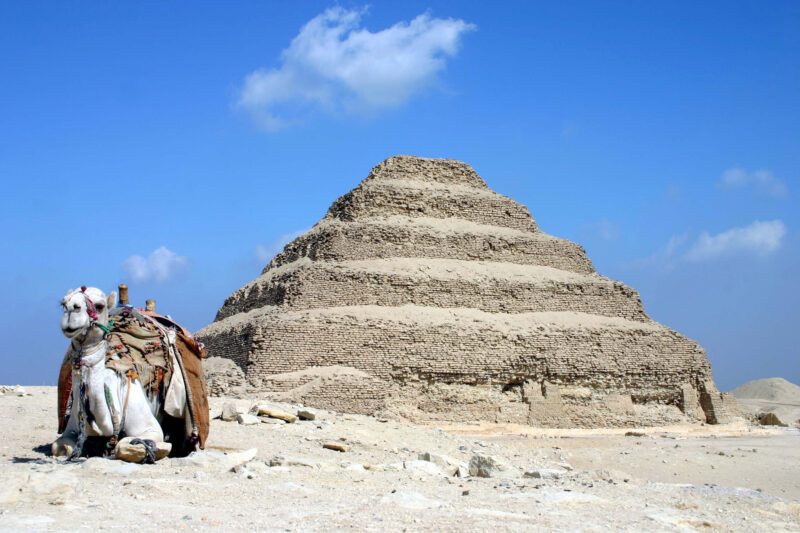
Saqqara is an elaborate archeological site, where you can visit the funerary complex of King Djoser including his step pyramid which is considered the first successful project of building a pyramid.
The Citadel of Saladin El-Ayoubi
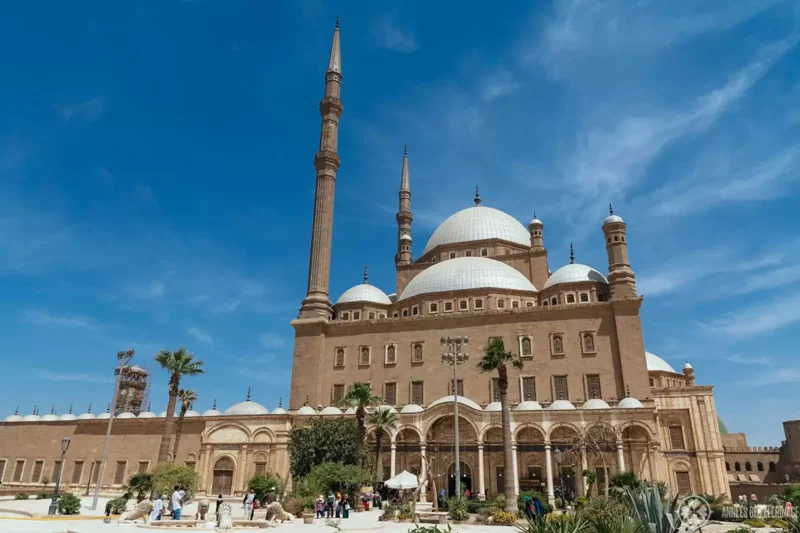
When the famous Islamic leader “Saladin El-Ayoubi” ruled Egypt, he realized that it must be fortified against any enemy attack. So he chose the high mountain of El-Mukkatem to build his huge castle.
Nowadays, the citadel of Saladin is one of the most famous monuments of Islamic Cairo. It played an important role in the Islamic period in Egypt since it was the residence of the sultan.
When seeing the citadel for the first time you will easily recognize an elaborate and elegant building with distinctive domes and minaret, it is the mosque of Muhammed Ali. It was built inside the walls of the citadel according to the Ottoman style of architecture.
Besides, there are other mosques inside the castle, along with many museums such as the military museum.
Finally, you should know that Egypt is very rich in monuments and attractions so try to choose your travel package carefully to be able to see most of the outstanding monuments there. Book your Nile cruise or Egypt tour with luxorandaswan.com.

